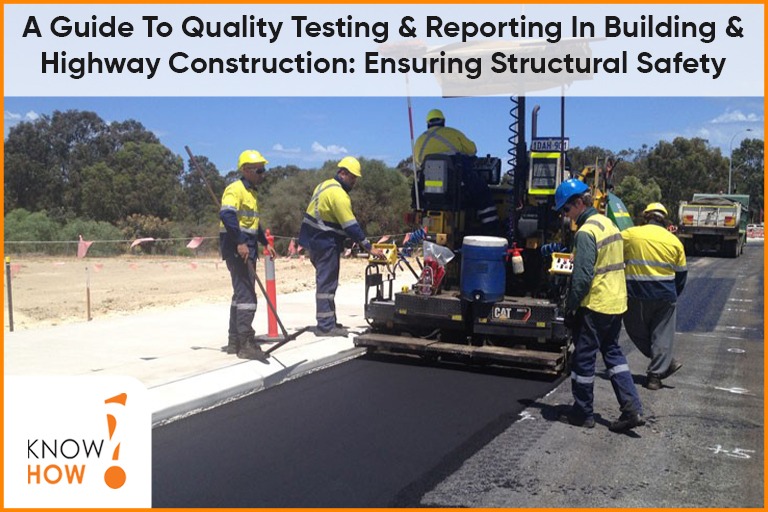Construction is an intricate and complex process that requires careful planning, execution, and monitoring at every stage. One of the critical aspects of construction is ensuring structural safety, which involves testing and reporting of various components and systems. Quality testing and reporting play a critical role in ensuring that the construction process meets the required standards, and the structures built are safe and reliable for the intended use.
In this guide, we will discuss the essential aspects of quality testing and reporting in building and highway construction and how they can help ensure structural safety.
- Importance of Quality Testing and Reporting
Quality testing and reporting are crucial for ensuring that the structures built meet the required safety and quality standards. They help identify and correct any defects in the building materials, systems, and components before they become a safety hazard. Quality testing and reporting also help ensure that the construction process is compliant with the relevant building codes and regulations.
- Types of Quality Testing
There are several types of quality testing that are performed during the construction process. They include:
a. Material Testing: This involves testing the quality and strength of the building materials used in construction, such as concrete, steel, and wood.
b. Structural Testing: This involves testing the strength and stability of the structural systems, such as the foundation, columns, beams, and walls.
c. Electrical Testing: This involves testing the electrical systems, such as wiring, switches, and outlets, to ensure safety and functionality.
d. Plumbing Testing: This involves testing the plumbing systems, such as pipes, valves, and fixtures, to ensure safety and functionality.
- Reporting Requirements
Quality testing reports are an essential aspect of the construction process. They provide critical information on the quality and safety of the building materials, systems, and components. Reporting requirements vary depending on the type of testing performed and the relevant building codes and regulations. However, some common reporting requirements include:
a. Test Results: This includes the test data and results, including any defects or issues identified during testing.
b. Corrective Actions: This includes the actions taken to correct any defects or issues identified during testing.
c. Compliance Status: This includes a statement on whether the construction process is compliant with the relevant building codes and regulations.
d. Recommendations: This includes any recommendations for future testing or improvements to the construction process.
- Importance of Documentation
Documentation is a critical aspect of quality testing and reporting. It provides a record of the testing process, including the test results, corrective actions, and compliance status. Documentation also helps ensure that the construction process is transparent and accountable, and can be used as evidence in the event of disputes or legal proceedings.
- Conclusion
Quality testing and reporting are critical for ensuring structural safety in building and highway construction. They help identify and correct any defects or issues, ensure compliance with building codes and regulations, and provide a record of the testing process. By following the guidelines outlined in this guide, construction professionals can ensure that the structures they build are safe, reliable, and meet the required quality standards.

